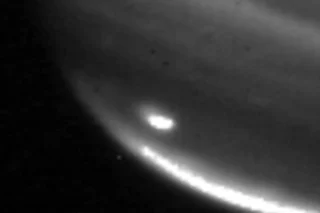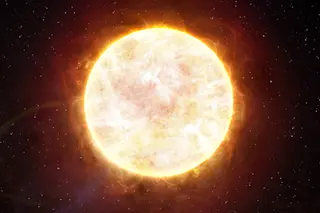Jupiter is sporting a new, Earth-sized scar near its south pole, and NASA has confirmed that the gas giant was thumped by a massive impact over the past few days. The discovery was made Sunday night by a Australian computer programmer who uses his spare time to stargaze with his backyard telescope, and today NASA declared that the dark spot is definitely not a weather system, and is indeed evidence of a collision. It's not yet known exactly what smacked into Jupiter; astronomers say it could have been an unknown comet, or a stray piece of ice.
This is only the second time such an impact has been observed. The first was almost exactly 15 years ago, when more than 20 fragments of comet Shoemaker-Levy 9 collided with the gas giant. "This has all the hallmarks of an impact event, very similar to Shoemaker-Levy 9," said Leigh Fletcher, an astronomer ...














